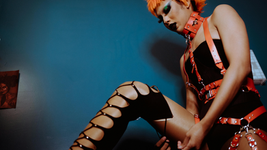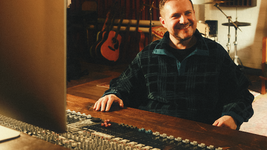'The Great Tamer', Dimitris Papaioannou (Dance Umbrella) - Sadler’s Wells Theatre
- Audrey Lemarchand
- Oct 17, 2018
- 3 min read

While painting at the Athens School of Fine Arts; Dimitris Papaioannou was performing at the same time both as a dancer and as an actor. With the creation of Edafos Dance Theatre in 1896, his career shifted to performing arts. Papaioannou gained international recognition when he was invited to direct the Opening and Closing Ceremonies of the Athens 2004 Olympic Games. Since then, his works have travelled the world (The Great Tamer has been or will be shown in 32 cities worldwide) and he is the first artist to create a new full-length work for recognized and acclaimed company Tanztheater Wuppertal Pina Bausch, which will tour to London with this new work in February 2019.
In The Great Tamer, choreography becomes a mere mean to give birth on stage to a wider visual creation of its own. Dimitris Papaioannou admits himself that the overall dark levelled scenography dressing the stage was one of very few ideas he had before starting the creation process.
In charge of directing, visualising and conceiving the work, the Greek director creates a timeless space in the theatre. Time seems suspended, almost removed from the room and flows intermittently. Several means enhance this perception. First, the music is more often absent than not. When it does play, it is only to be ephemeral, airy and delicate. Without feeling repetitive, the same musical theme from Strauss’ An der schönen blauen Donau is repeated through out the hour-forty-long piece, altering the perception of the minutes passing. Then, the persistent use of slow motion in the choreography wildly enhances the display of a different appreciation of time. The choreographer describes his emblematic use of the technique in his works as unconscious and apolitical. It is, he says, his natural and preferred way of telling stories. It remains nonetheless a highly efficient one. Next, the illusions Papaioannou masterfully creates with the performers’ bodies, interlacing, binding, morphing, fragmenting, reconstructing them broadens the realm of the physically possible on stage. The old stage tricks of using traps and artefacts participate as well in creating an illusionary world.

The work evokes a cycle of repetition of birth and death, beginnings and ends, construction and destruction. The first scene, repeated throughout the piece is a never-ending tresillo of placing/displacing/regaining; placing/… and so on. A naked man, dug up from the soil under the stage by a topless female astronaut (conjuring in a flash Pietà iconography) comes later to die during Dr Tulp’s anatomy lesson in a reconstruction of the famous painting by Rembrandt. The influence of fine arts and ancient Greece in the piece is omnipresent, echoing Dimitris Papaioannou’s background. A plethora of precise artistic references can be found in each scene – the Venus de Milo, Francisco Goya’s depiction of Cronus devouring his children, Andrea Mantegna’s Christ – but a light touch of iconography of art may generally be detected in every pose and move.
This makes for a highly visual and symbolical work. Overall, the piece is exceptionally aesthetic, dramatic and complex. This complexity is found in the storytelling as well, which embarks the audience member in a mysterious journey. Yet, the strength of the work easily surpasses the questions left unanswered, and the transmission of emotions and of visual ecstasy remains unaffected. Achieving this, before all else, shows the incredible tour de force of Dimitris Papaoiannou and artistry in creating this piece.
Wednesday October 16th and Thursday October 17th 2018
Tickets: £12 - £27

































